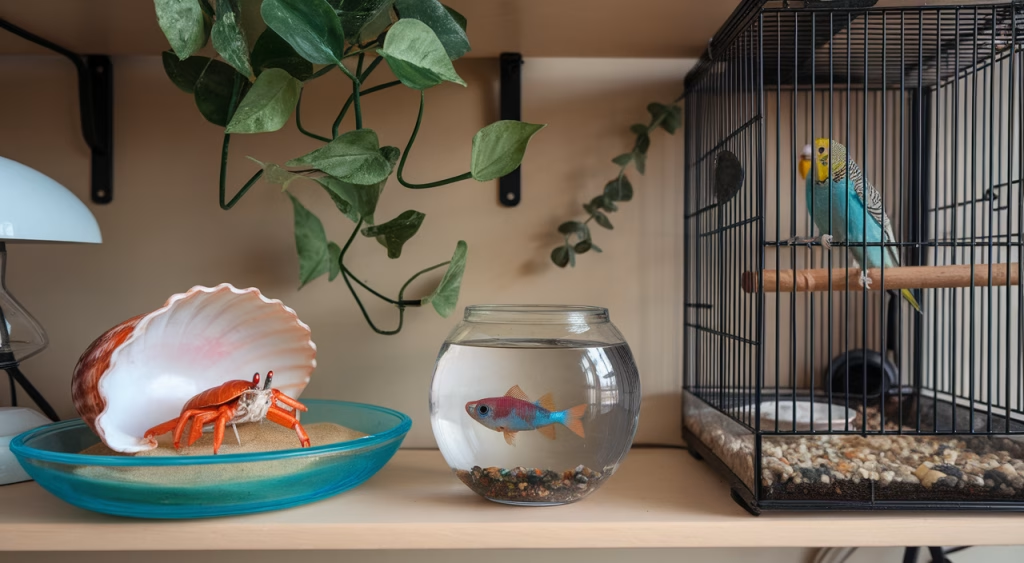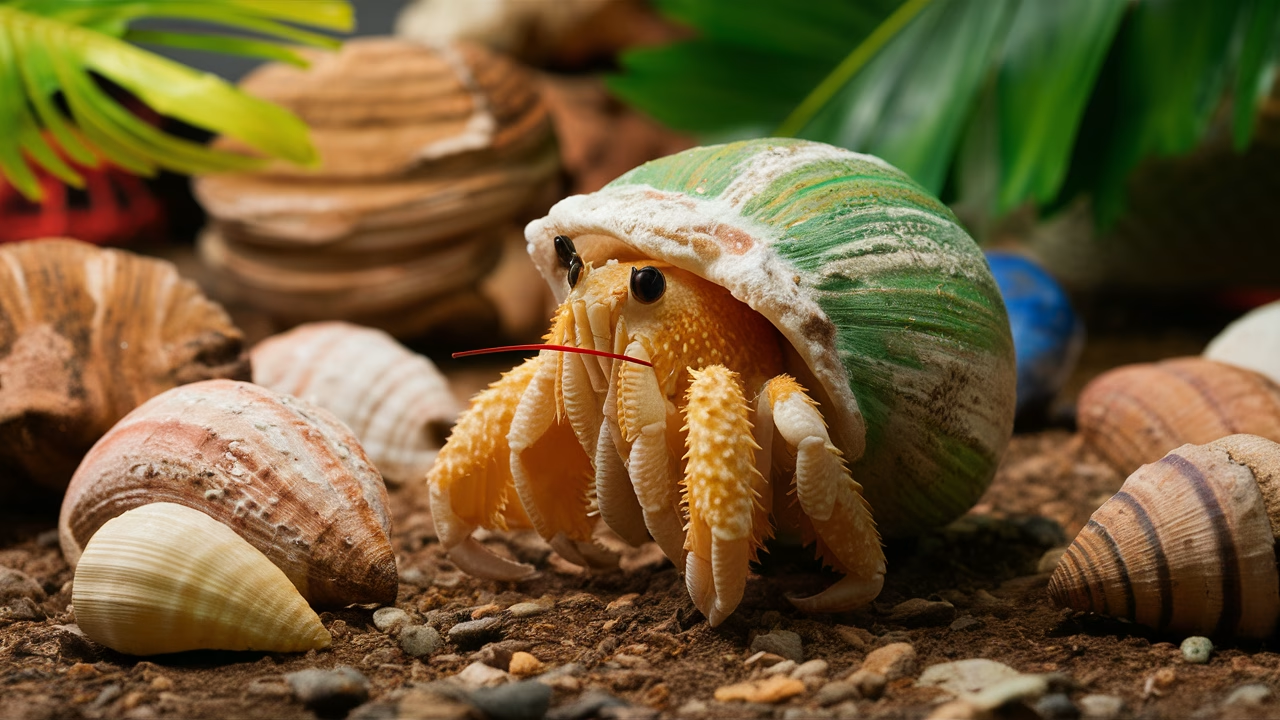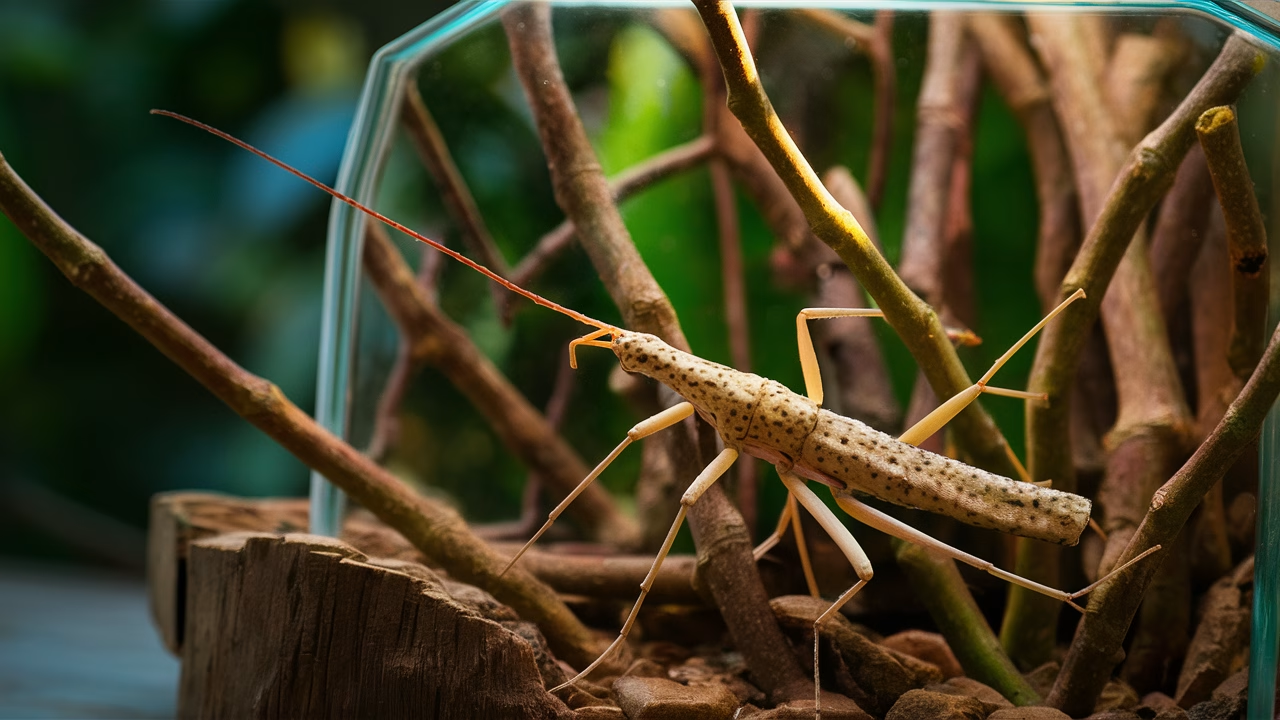What are the best low-maintenance pets for busy people?
The best low-maintenance pets for busy people are animals that require minimal daily care, are independent by nature, and can thrive in small or unconventional living spaces. Examples include hermit crabs, betta fish, budgerigars, axolotls, chinchillas, stick insects, snails, and Madagascar hissing cockroaches—each offering their own unique charm!
- Hermit crabs are fascinating shell-swapping creatures with playful behaviors and minimal upkeep.
- Betta fish thrive in small tanks and exhibit strong personality traits without needing constant attention.
- Budgerigars (budgies) are tiny chatterboxes that can mimic speech and sounds with little mess.
- Axolotls require cold water and love their aquatic space without needing companionship.
- Chinchillas are cloud-soft animals that thrive on temperature control and dust baths, not water.
- Stick insects bring unusual delight through their slow-motion camouflaged charm.
- Snails are meditative movers that turn leftover veggies into entertainment.
- Madagascar hissing cockroaches defy the stigma by being clean, quiet, and oddly charismatic.
These low-maintenance pets aren’t just “easy”—they’re captivating. Whether you live in a small urban apartment or are constantly on the go, there’s a low-maintenance animal companion waiting to make your life a little more delightful.
Hermit Crab: The Real Estate Mogul House Hunter
Why Hermit Crabs Are Surprisingly Perfect Low-Maintenance Pets
Ever heard of a pet that treats its wardrobe like a weekend hobby? Hermit crabs are whimsical creatures locked in an eternal game of home improvement. These low-maintenance pets spend their lives upgrading their shells as they grow—like little mobile interior decorators obsessed with real estate.
Hermit crabs require a tropical habitat with 70–80% humidity, a 10–20 gallon tank depending on how many you keep (yep, they’re social!), and a variety of shells to choose from. Watching them try different shells is like pressing play on nature’s version of a fashion show.
But don’t mistake their low-maintenance care for low personality. They’re playful, inquisitive, and even interact with their owners through gentle climbing or touch. Just be sure to offer proper substrate (like coconut fiber) for digging—it’s part of their instinctive molting process.
Betta Fish: The Introverted Aquatic Companion
Betta fish—or Betta splendens—are known for their vivid colors and dramatic flaring. But beneath their aquatic beauty lies a complex, highly individual temperament worth celebrating. These stunning low-maintenance pets prefer solitude, making them ideal companions for people who want interaction without the responsibility of multiple animal playdates.
Betta fish only need a clean tank of at least 5 gallons, warm water (76-82°F), and consistent feeding. They recognize your face over time, swim with anticipation near the tank walls, and do full feeding-time performances that rival any Broadway act.
Low-maintenance with high entertainment value, they’re perfect for small living spaces and tight schedules. Just avoid placing two males together—they’re solitary for a reason.
Budgerigars: Tiny Parrots with Big Personalities
If a podcast host were ever reincarnated as a bird, it would be a budgerigar (also called budgie or parakeet). These small parrots are fierce conversationalists that can learn words, whistle tunes, and mimic sounds like your microwave beep or ringtone. You’ll never feel alone with these low-maintenance pets around.
Budgies thrive in cages at least 18x18x24 inches and ideally get daily out-of-cage flight. They need social interaction, toys, and some daily seed-and-pellet variety meals, but no daily walks or litter scooping.
Have one budgie? Talk to them like you would a chatty roommate. Have two or more? Expect ongoing avian soap operas filled with chirps of joy and drama.
Axolotl: The Aquatic Baby with Surprising Abilities
Meet the axolotl—a salamander that never grows up. Literally. With a cartoonishly cute face and the ability to regenerate limbs, they bring a kind of fantasy-fueled magic to the world of low-maintenance pets. Think of them as aquatic healers crossed with Pokemon characters.
Axolotls need a cool-water aquarium (60–68°F), no filtration current, and hiding spots. They thrive without company and feed mainly on worms or pellets a few times a week.
Their placid stare, perpetual “smile,” and fascination with their surroundings make them deeply relaxing to watch. Fair warning: you might lose hours to their Zen vibe.
Chinchillas: Fluffy Rebels with Unique Behaviors
If cats had cloud-like fur and hopped like kangaroos, they’d still fall short of chinchillas. These temperature-sensitive night owls clean themselves with dust baths and can rocket-jump six feet straight up. Living with one of these low-maintenance pets is like sharing space with a tiny parkour expert wrapped in luxury cashmere.
They require a large, well-ventilated cage out of sunlight and temperatures under 75°F. Their dietary needs are simple (pellets and hay), but their activity levels go through the roof at night.
Many owners are surprised by how expressive they are—one eye roll from your chinchilla can communicate entire novels.
Stick Insects, Snails, and Hissing Cockroaches: Nature’s Quirky Creatures
The Ultimate Trio for Quirky, Cool, and Committed Pet Lovers
Let’s break these three down, because each offers a special lane in the world of unusual low-maintenance pets:
Stick Insects
The method actors of the insect world. They mimic twigs down to a science and even sway to mimic a breeze. Low activity but high fascination—these guys only need a small enclosure, fresh leaves, and a soft substrate. They’re fascinating for kids and adults, blending nature visibility with classroom charm.
Snails
One of the most meditative low-maintenance pets you’ll ever meet. Snails glide along at their own tempo, making vegetable scraps disappear like magic. Their terrariums are easy to clean, and they require little space. Just mist daily and admire how they conquer the world in slow motion.
Madagascar Hissing Cockroaches
Yes, they hiss. But not in anger—in communication. These roaches live up to five years, need a simple plastic container, and eat almost anything plant-based. More hygienic than you’d imagine, they’re surprisingly docile and handleable. A conversation piece if there ever was one.
| Pet | Tank/Cage | Feeding | Social | Lifespan |
|---|---|---|---|---|
| Hermit Crab | 10-20 gal tank | Crab pellets, veggies | Yes | Up to 10 years |
| Betta Fish | 5+ gal tank | Pellets, bloodworms | Solo | 3–5 years |
| Budgerigar | Minimum 18x18x24 cage | Seeds, pellets | Highly social | 5–10 years |
| Axolotl | 20 gal tank | Worms, pellets | No | 10–15 years |
| Chinchilla | Large cage | Pellets, hay | Optional | 10–20 years |
Why All Clownfish Are Born Male: The Science Behind Their Remarkable Sex Change
Frequently Asked Questions
- What’s the most low-maintenance pet with personality?
The betta fish combines vibrant flair with introverted charm, making it perfect for people who want visual interest and interaction without daily effort. - Are hermit crabs hard to care for?
No, but they do require the right humidity, temperature, and natural substrate. The biggest challenge is offering enough shell choices for molting. - Do axolotls need companionship?
Not really. Axolotls are solitary by nature and may even become stressed by tank mates. - Are stick insects safe for kids?
Yes! They’re non-biting, slow-moving, and excellent for observation—just supervise gentle handling. - Can chinchillas be pet if they’re so fluffy?
Surprisingly, they’re delicate—avoid getting their fur wet. With time and care, they can bond deeply. - Will a hissing cockroach escape?
Not if kept in a properly ventilated, secure habitat. They’re poor climbers when housed correctly.





